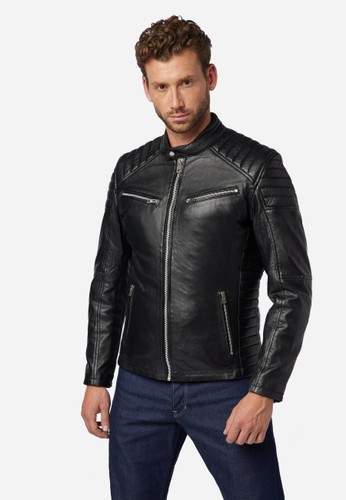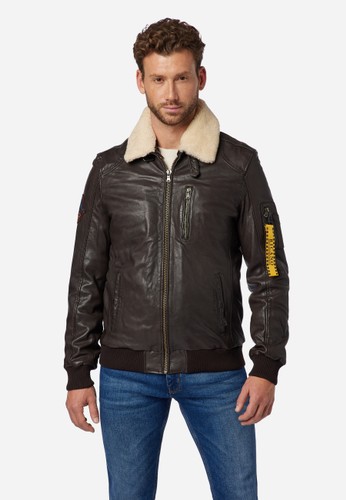Unsere Verantwortung
Die globalen Probleme der Klimakatastrophe und wachsender sozialer Missstände betreffen jeden von uns. Als Familienunternehmen liegt uns besonders daran, unseren Planeten und unsere Gesellschaft auch für zukünftige Generationen zu stärken. Gern informieren wir Sie darüber, was wir hierfür unternehmen und vorhaben.
Drei Säulen der Nachhaltigkeit:Umwelt, Sozial, Wirtschaft

Ricano Nachhaltigkeit im Überblick
- Sozial
- Keine Zwangsarbeit in unserer Lieferkette
- Langfristige Partnerschaften mit unseren Produktionsstätten
- Äußerst diverse Unternehmenskultur
- Ökologisch
- Kontrollierte Abwasserprozesse in der Gerbung
- 50% Beteiligung an CO2-Ausgleich unserer Kunden
- CO2-neutrale Logistik und Zustellung
- Wirtschaftlich
- Neue Modelinien mit Nachhaltigkeit als Grundvoraussetzung
- Große Investitionen in Informationstechnologie als Schlüssel für nachhaltige Praktiken
Nachhaltige Mode
Vieles spielt in die Idee nachhaltiger Mode ein: wie lange ein Kleidungsstück getragen wird, wie oft es gewaschen werden muss, wie es produziert wurde, woher die Materialien stammen, und wie und auf welchen Wegen diese und das Endprodukt transportiert wurden. Lederbekleidung ist ein besonders kompliziertes Thema. Ricano nutzt ausschließlich Leder, das durch die Fleischindustrie ohnehin schon anfällt - keine Tiere werden extra für unsere Mode gehalten oder gezüchtet.Aber auch wenn Leder ansonsten auf Mülldeponien kompostieren und weitere Treibhausgase freisetzen würde, betrachten wir Leder nicht nur als Abfallprodukt. Mehr dazu unter: Wie wir CO2 kompensieren
Vieles spielt in die Idee nachhaltiger Mode ein: wie lange ein Kleidungsstück getragen wird, wie oft es gewaschen werden muss, wie es produziert wurde, woher die Materialien stammen, und wie und auf welchen Wegen diese und das Endprodukt transportiert wurden. Lederbekleidung ist ein besonders kompliziertes Thema. Ricano nutzt ausschließlich Leder, das durch die Fleischindustrie ohnehin schon anfällt - keine Tiere werden extra für unsere Mode gehalten oder gezüchtet.Aber auch wenn Leder ansonsten auf Mülldeponien kompostieren und weitere Treibhausgase freisetzen würde, betrachten wir Leder nicht nur als Abfallprodukt. Mehr dazu unter: Wie wir CO2 kompensieren
Unsere Berechnung zur CO2 Kompensation (pro Lederjacke*)
Es gibt drei verschiedene Betrachtungsweisen auf die CO2 Emissionen von Leder:
- Leder ist ein Abfallprodukt der Lebensmittelindustrie.Wenn dieser auf Mülldeponien verwest, wird CO2 freigesetzt. Lederbekleidung reduziert CO2, da es diesen Abfall verhindert.
- Leder ist ein Beiprodukt der Lebensmittelindustrie.Da noch immer Leder auf Mülldeponien endet, wird für Leder kein zusätzliches CO2 produziert. Leder ist in sich also CO2-neutral.
- Leder trägt genau so zu CO2-Emissionen bei wie die Lebensmittelindustrie.Wir ignorieren kompostierende Lederabfälle.
| 1. | 2. | 3. |
 | ||
Leder wird vor dem Kompostieren gerettet | Leder ist CO2-Neutral | Leder produziert regulär CO2 |
| - 188kg CO2 | +/- 0kg CO2 | + 186kg CO2 |
| + 17kg CO2 | ||
| - 171kg CO2 | 17kg CO2 | 203kg CO2 |
| Produktion und Transport von Accessoires zur Produktion | ||
| + 5.5kg CO2 | ||
| - 165.5kg CO2 | 22.5kg CO2 | 208.5kg CO2 |
| + 3.5kg CO2 | ||
| - 162kg CO2 | 26kg CO2 | 212kg CO2 |
| + 2.5kg CO2 | ||
| - 159.5kg CO2 | 28.5kg CO2 | 214.5kg CO2 |
214.5kg CO2 pro Lederjacke: die Klimakrise kennt keinen bequemen Ausweg
Die verschiedenen Betrachtungen auf die CO2-Emissionen einer einzelnen Lederjacke verdeutlichen, wie kompliziert das Thema nachhaltiger Mode ist.Wir machen es uns jetzt noch nicht leicht und wählen die ungünstigste Perspektive - so stellen wir sicher, dass wir mit unserer CO2-Kompensation auch wirklich etwas erreichen. Wenn Sie sich bei Ihrem Einkauf also für einen CO2-Ausgleich entscheiden, können Sie sicher sein, dass Sie das Klima nicht belasten. Praktisch sorgen Sie für eine CO2-Reduktion in unserer Athmosphäre und unternehmen so aktiv etwas gegen die Klimakatastrophe.Wir übernehmen die Hälfte der Kosten, wenn Sie sich bei Ihrem Einkauf für die CO2-Kompensation entscheiden, und leisten so unseren Beitrag zum Klimaschutz. Idealerweise befolgen Sie trotz Ihres klimaneutralen Einkaufs den einfachsten Grundsatz nachhaltiger Mode: pflegen und tragen Sie Ihr neues Produkt so lange wie irgendmöglich. Denn der beste Konsum für unseren Planeten ist immernoch kein Konsum.
Erfahren Sie mehr.







